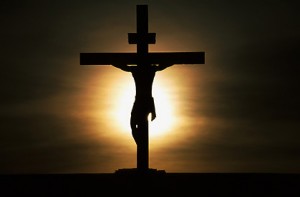 (My guest editorial from this month’s Catholic Insight.)
(My guest editorial from this month’s Catholic Insight.)
Holy Week offers an annual barrage of media questioning the authenticity of the last week of Jesus’ life: his death, burial, and Resurrection. Bizzare, outlandish theories on what happened to Jesus are front page news – evidence is optional.
Countering that trend is Jesus, the Final Days (Westminster John Knox Press, 2009), by noted Evangelical scholar Craig A. Evans, the Professor of New Testament at Acadia Divinity College, and N.T. Wright, the Anglican bishop of Durham, England. Titans of scholarship, they debunk the unvarnished schlock that often passes for historical Jesus research.
With sober eyes on actual historical evidence, these men make their case about what really happened to Jesus of Nazareth. Chapter one, “The Shout of Death”, by Evans, presents the evidence for Jesus’ death by crucifixion. This has become necessary in today’s climate, due to the denials of sensationalist controversialists. Case in point: a recent book states that Jesus faked his own death (with Pilate’s help!), subsequently fleeing to Egypt. As Evans notes, “…the utter silliness of this scenario escapes many in today’s reading public” (p.3).
Jesus’ death is well-affirmed by the New Testament, but also by historians of the age: Josephus, Tacitus, Lucian of Samosata, and Mara bar Serapion all report it. Evans makes a persuasive case for the historicity of aspects of the Passion Narrative that are often questioned by scholars, including the “Passover Pardon” of Barabbas – Jesus Barabbas, according to some ancient manuscripts of Matthew. The irony is not lost – “bar Abba” means “son of the father”. The crowd selects the wrong Jesus, not the true Son of the Father.
After reviewing the meaning of Jesus’ mockery at the hands of the soldiers (mimicking he Roman “triumph” of the Caesars, who were called “divine” and the “son of god”), Evans makes a theological observation on Jesus’ death: “‘Then Jesus gave a loud cry and breathed his last’ (Mark 15:37). The act of shouting is itself the death…His death manifests itself as a shout…Jesus’ very death displays his power; the release of his spirit is awesome.” This is why the centurion attending Jesus exclaims, “Truly this man was God’s Son!” (Mark 15:39) – something he was only supposed to confess of the Roman Emperor (p. 34-35).
Part two, “The Silence of Burial”, also by Evans, authenticates Jesus’ burial. This is necessary due to theories like former Catholic priest John Dominic Crossan’s, who famously claimed that Jesus’ dead body was likely thrown into a shallow common grave, where it was eaten by dogs. While not denying that at times in late antiquity, the Romans would leave bodies on crosses to be mauled by animals and birds of carrion (as a public deterrent to revolt), there is no chance this happened to Jesus, because it was peacetime. For Pilate to have left Jesus’ body hanging on the cross overnight during Passover would have been a fatal mistake, all but guaranteeing a riot by the myriad Jews gathered in Jerusalem for the feast. The Romans never would have risked offending Jewish sensibilities here, which they respected during times of calm. Leaving Jesus’ body on the cross would have defiled the land (see Deut. 21:22-23), making it impossible for Jews to celebrate the feast in an acceptable manner. No, Jesus did receive a proper burial with the help of Joseph of Arimathea, an undoubtedly historical reference (no early Christian would have invented a story of Jesus receiving a proper burial, not from his followers, but from a member of the very council that condemned him).
The final chapter, “The Surprise of Resurrection” by Wright, is a condensed version of his massive tome, The Resurrection of the Son of God. While verifying the bodily nature of Jesus’ Resurrection, Wright corrects many wrong notions of resurrection in general: it most emphatically is not “disembodied bliss” or even “life after death”. It means, in his fine phrase, “life after life after death”. The surprise was that a bodily resurrection occurred within history, whereas most Jews expected no one to be raised from death until the general resurrection at the end of time (cf. Daniel 12:1-3).
This massively learned, although short and readable book, will probably not become a bestseller, although one wishes it were otherwise. The reason is simple: no crackpot conspiracy theories are hidden within. Just the facts.

